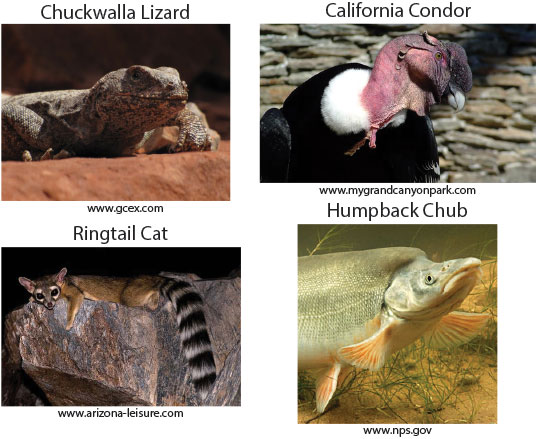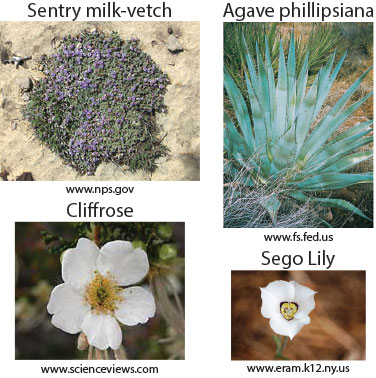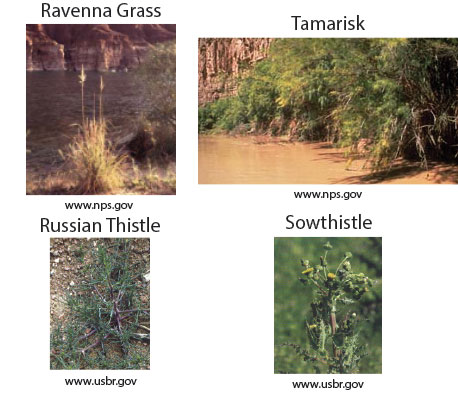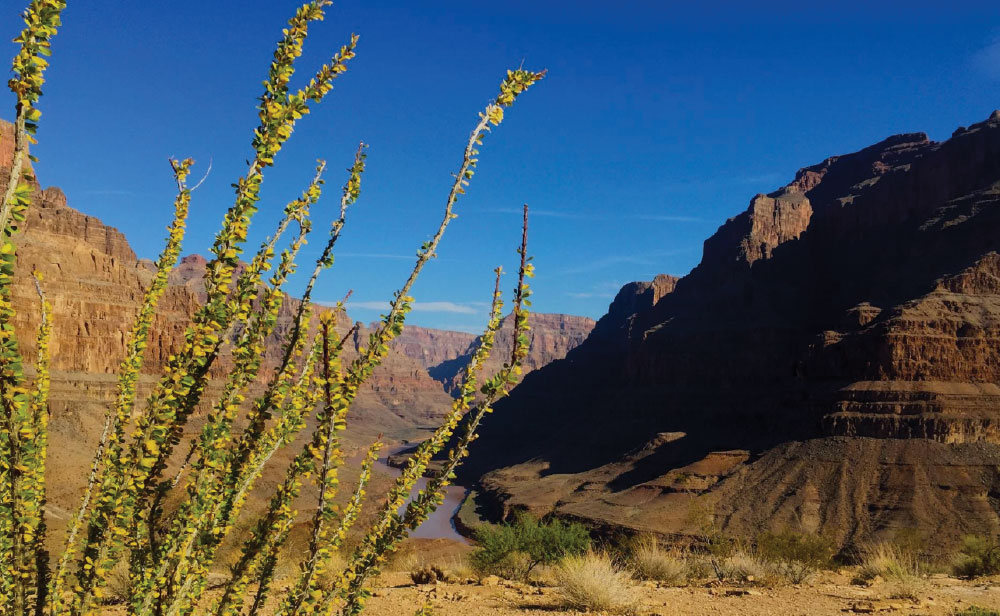The Grand Canyon not only lays claim to one of the world’s most beautiful landscapes, but also some interesting and unique plants and animals. In fact, the Grand Canyon has about a dozen plants that are not found anywhere else in the world, and only about 10% of its plants are not native. The canyon is also home to many mammals, birds, reptiles, and fish, some of which are on the endangered species list. Below is some more information about some of the plants and animals that can be found in the Grand Canyon.

Native Animals
Some animals that can be seen in the Grand Canyon include mountain lions, bobcats, gray fox, bighorn sheep, ringtail cats, a variety of birds such as bald eagles, red tail hawks, and California Condors, and reptiles such as salamanders, snakes, Chuckwalla Lizards (the second largest lizards in the United States), and Short-Horned Lizards. The Grand Canyon is also home to several endangered species of fish, such as the Humpback Chub and Razorback Sucker. Many of the fish found in the Grand Canyon can only be found in the Colorado River, due to its geographic isolation. The National Park is currently working to conserve and restore native fish populations.
Plants found only in the Grand Canyon
There are over 1,700 species of plants in Grand Canyon National Park. About a dozen of these are endemic (only found in a specific area) to the Grand Canyon. Some of these plants do not even have common names, as they are so rare or recently discovered. Two of these endemic plants include Agave phillipsiana and Sentry milk-vetch. Some other plants that can be found in the Grand Canyon include Sego Lilies, Cliffrose, and paintbrush.


Invasive Species
Invasive species are non-native plants or animals that cause negative effects to the natural habitat. Some invasive plants that are found in the Grand Canyon are ravenna grass, Russian thistle, sowthistle, and tamarisk. Volunteers have been working on controlling ravenna grass since the 1990s, which produces large numbers of seeds which are spread by the wind. Tamarisk makes it hard for native plants to grow, alters soil composition, and increases fire frequency.
Here is what some of our guests have to share about experiencing the Grand Canyon and all of its wonders from the air and from our beautiful landing site, nearly 4,000 feet below the rim.
“My husband surprised me with a sunset helicopter ride for my birthday. It was an unbelievable experience! The ride was something I will never forget! We soared between plateaus and into canyons while listening to incredible music. The canyon-side dinner was delicious and we enjoyed walking around among native plants before watching a picturesque sunset. The ride home towards the setting sun surpassed any expectations I could have had. If you are in Vegas, you have to do this tour!!” – JENN B
“I had the champagne lunch tour with a stop down in the canyon, and I have to say the scenery was unmatched ANYWHERE I have been in this world, it was fantastic. The Canyon itself was incredible on all levels, aspects of different parts and places were defined and I could not get over the majesty of the place. There is nothing like it ANYWHERE in the world I am sure! I never realized chipmunks were so small and… they squeak and chirrup – sooooooooo cute! The trip out of the canyon was equally, if not more exciting than the trip in (if that could happen)!!! ” – Kerry C

Interested in visiting the Grand Canyon with Serenity? Please book online through the tours page or feel free to call 888-589-7701if you have any questions.


